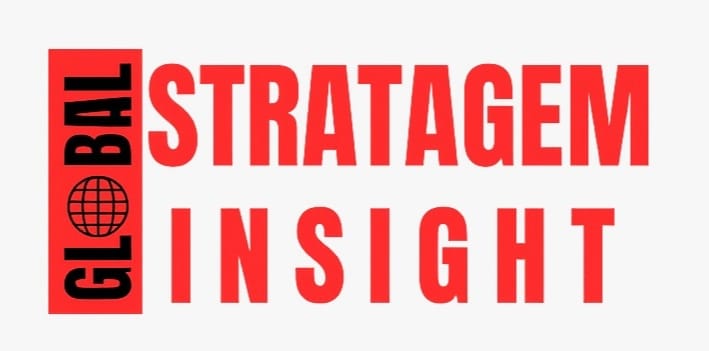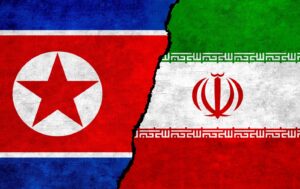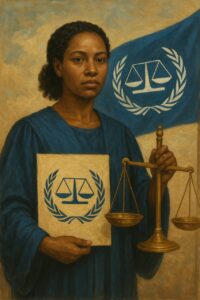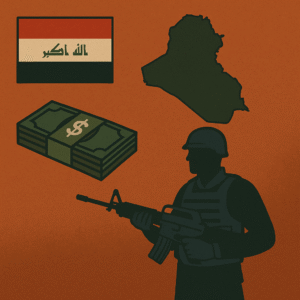Alarming Realities: Child Rights in Pakistan Under the Lens of the International conventions
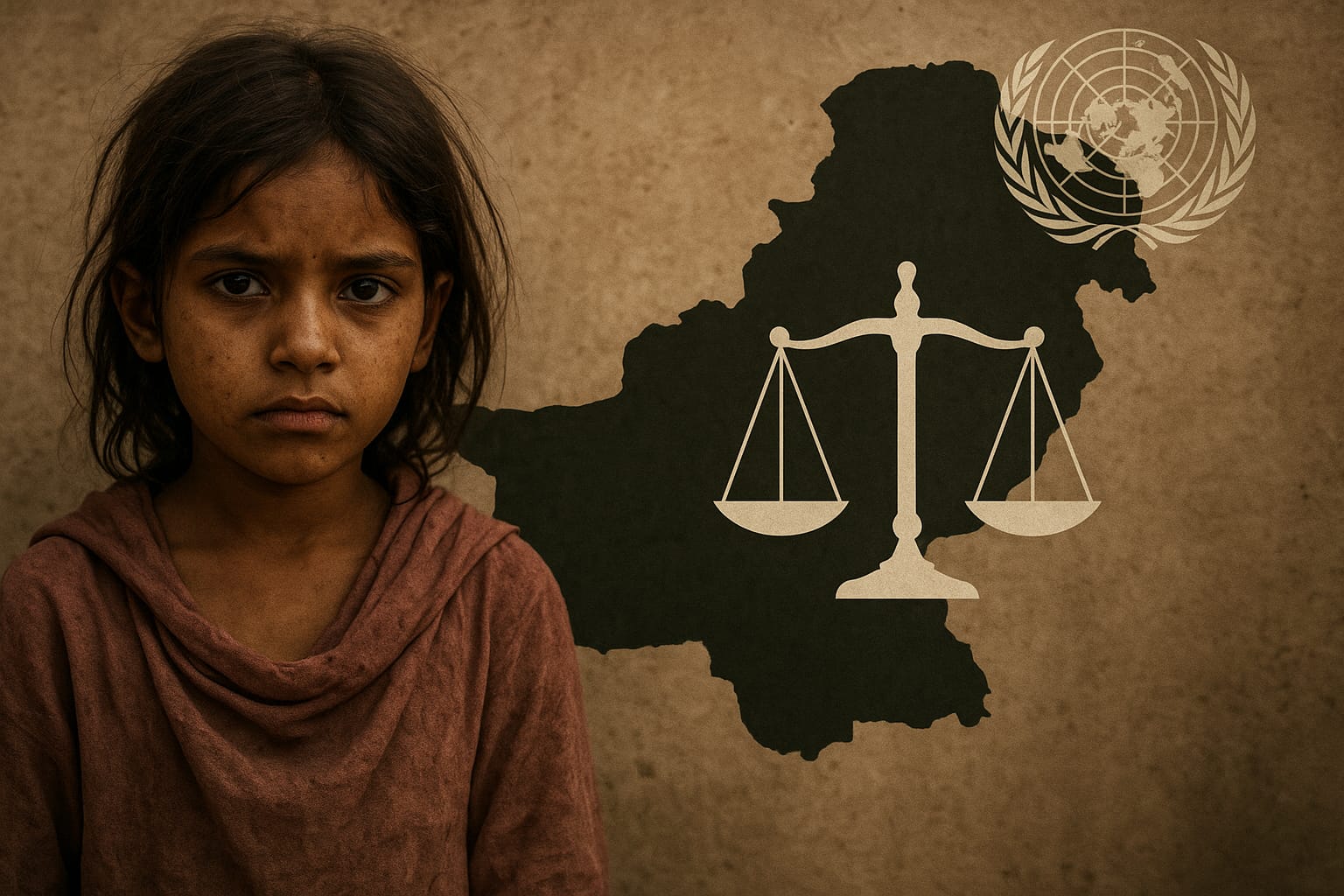
A stark portrayal of the challenges faced by children in Pakistan under international child rights frameworks.
Introduction
‘History will judge us by the difference we make in the everyday lives of children. There can be no keener revelation of a society’s soul than the way in which it treats its children.[1]’ Nelson Mandela
The above-mentioned quote of famous world political leader shows how mandatory child right are for states. First, we have to understand child rights. A clear definition about child is given by the ‘United Nations Convention on the Right of the Child (CRC)’ under the Article 1 of the part 1 which states that: “a child means every human being below the age of eighteen years unless under the law applicable to the child”[2].
According to Pakistan Bureau of Statistics which released its census statistics under the Ministry of Planning, Development & Special Initiatives in a press release at 18th July 2024 stating that Pakistan is the 5th largest country in terms of population. The total population of the country is 241.9 million, out of which only 112 million lie under the age of eighteen years[3], which becomes 47% of the whole population.
In the Constitution of Pakistan (1973), education for children age 5 to16 free for all, regardless of race, sex, and gender. But in practice, there is a lack of strategy to implement the constitutional laws on the ground to provide education to all. Approximately half of the total population of Pakistan consists of children, but unfortunately these children are facing severe obstacles and threats in increasing their basic rights. This article uses data on various child rights, revealing multiple domains of children’s rights violation and issues faced by the innocent children. Violence against children has multiple faces in Islamic Republic of Pakistan, such as: lack of education, child sexual abuse, child trafficking and abduction, forced marriage and many more.
This study will present data of child rights violations in Pakistan, and explore what actions and legislation have been taken so far by the government to protect the rights of children. This piece of writing will also explore different provincial and federal government legislations on the protections of children’s rights from any sort of violence? What is the approach of the different governments, and how they implement the existing laws on the ground to protect the rights of children? Different measures have been taken so far by governments against child rights violation namely: Zainab Alert, Zara Alert, Laws against child and forced marriages, anti-rape laws, laws against abduction. But still there are loopholes which are strong obstacles for institutions to stop violence once and for all.
The author collected data from different platforms such as news agencies, child organizations, United Nations Committee on the Rights of Child and organized and obtained data sequentially to explain the situation of child rights violations in Pakistan. Lastly this study will explore the International Conventions about child rights and what are the Pakistan’s commitments are to international conventions on Child Rights.
This study is critical to raise awareness among the citizens of Pakistan about the child rights and to stop violations of rights in future. It is also aim to remind the government of its commitments under international conventions. In the constitutions of Pakistan, it has included several articles about child protection and which was guided by or extracted from International Conventions on Child Rights which create legal obligation on Pakistan to fulfil international commitments under the ratified conventions on child right protection.
Cases
Lack of Education
The population of Pakistan is 241.9 million according to 7th census data released on 18th July 2024 by the Pakistan Bureau of Statistics. The population of children is 112 million[4] as per the statistics. Children are those who are below the age of eighteen. In those countries where the youth population exists or is expected in future those countries focus on investing in youth. Already in Pakistan, the large youth demographic is on the rise, total youth population is 62.58 million aged between 16-29, which becomes 26% of whole population.[5]
So in future it is expected that this number will increase fast because of the current proportion of children population. Unfortunately, these children have no access to proper education. Under article 25-A of the constitution of Pakistan education is the ‘fundamental Right’ of children from age 5 to 16, it is the duty of the state to provide free and compulsory education for all across the country[6]. But it is not the case in reality. According to UNICEF, ‘Prime Minister of Pakistan’ states that 22.8 million children aged 5-16 are out-of-school-children (OOSC), second highest in the world.[7]
These inequalities arise on the basis of gender, socio-economic status, and geography, which are critical factors. More alarmingly girls who make up more than a half of the population of whole country, the literacy rate among girls is only 49% in this modern digital era. The two most vulnerable provinces in child education are Baluchistan, where 78% of girls are out-of-school-children, followed by Sindh, comprising the ratio of 58% girls are OOSC.
Child sexual-abuse
Child sexual abuse is defined by UNHCR: “the actual or threatened physical intrusion of a sexual nature, whether by force or under unequal or coercive conditions. Any sexual activity with children (persons under the age of 18 years) constitutes sexual abuse[8]”. While in Pakistan Penal Code under article 377A defines sexual abuse as: “Whoever employs, uses, forces, persuades, induces, entices, or coerces any person to engage in, or assist any other person to engage in fondling, stroking, caressing, exhibitionism, voyeurism, or any obscene or sexually explicit conduct or simulation of such conduct either independently or in conjunction with other acts, with or without consent where age of person is less than eighteen years, is said to commit the offence of sexual abuse[9]’’.
In Pakistan the cases of sexual-abuse have already crossed the alarming level. Many reports have been published by different organizations that show how the children are sexually abused in different parts of Pakistan and what the factors are leading to sexual frustration or abuse. A ‘Non-profit organization’ in Pakistan, Sahil, ‘Published’ its comprehensive report for data from 2024 which is backed by UNHCR, International based new agencies, DAWN and many more. The report claims that only in the first six months of 2024, total number of reported cases was 3364, of which only 1828 (54%) cases of child abuse were reported[10]. There were 56 reported cases of murder victims following sexual abuse.
Gender-based reports show us this alarming data; 33 (53%) boys and 22 (45%) girls were killed[11] (These alarming should alert the authorities to change the policies to protect the rights of the children). But at the same time these are not enough to be trustworthy because it is not showing that what is happening on the ground, realties are more ear-piercing.
In Pakistani society it is not so easy to register report against the accused especially -against the Sexual beasts, it requires big courage to report against the black-sheep. Even the society will start blaming them back for being a victim of sexual-abuse.
Secondly, children’s can also be abuse through digital platforms, Online-Child-sexual-exploitation-and-abuses (OCSEA) cases are increasing day by day due to unregulated use of digital platforms. Pornography can be defined as; any image or video of up to eighteens year old wheather through electronic or mechanical device can be considered as pornography[12]. Also reported that a total of 116 cases were registered of pornography after abduction[13] in year 2024 only.
Child Trafficking and abduction
In Pakistan in each sphere of crime related to child abuse always show the shocking numbers. Report published by sustainable social development organization (SSDO) reported by express Tribune, data reveals that total number of child trafficking cases in 2024, 586 cases were of child trafficking and 895 cases were of child labor[14]. Child labor and child trafficking are two interlinked terms.
Those criminals who are involved in child trafficking have the purpose of forced labor, drug trafficking, organ trafficking, illicit adaptation, sexual exploitation and forced marriages.[15] And those child who have supplied to Meddle eastern countries have a purpose of beggaring. While abduction or kidnapping of the children is another aspects of the problem. In 2024 child abduction rate was 1327, out of that 65% were girls and 35% boys were abducted[16]. Abduction of child has its own multiple purposes but abduction for child trafficking includes ambitions such as child labor, drug, organ trafficking, sexual exploitations and many more.
Forced marriages
In every religion either it is Islam or any other religion gives permission to choose own life partner. I emphasized here on Islam because this study is related to Pakistan and Islam is the dominant or majority religion in Pakistan. But if we see different data sets reported by news agencies or any other government or non-government organization, they shows that it is not always the case to choose life partner of their own choice, especially for those who are below the age of eighteen, which we consider child’s under the UN convention on child and also explained by the Constitution of Pakistan discussed above. But here in the cases of child marriage federal and provisional governments has its own laws. In three provinces legal marriage age is sixteen years which will be discuss in detail in following section.
According to United Nations children’s Fund (UNICEF), Pakistan ranks sixth highest in the world in terms of child marriages. Over 19 million girls reportedly got married before reaching the limit age of eighteen. Almost half of them become pregnant before the age of eighteen[17].
These circumstances pose a high medical risk both for girl and unborn child. This is not only a serious, social crises but also create a serious risk for medical sector in Pakistan which is already under the pressure. It is also often debated how much Pakistan is spending budget on health sector, and the answer is, unfortunately not very encouraging. These numbers can be decreased by making and also implementing strict laws against child marriage to prevent further birth of medically vulnerable children and also to protect girls from early and unwanted pregnancies.
Government laws and international commitments
In Pakistan laws are formed for every crime but unfortunately implementation mechanism is very weak which exposes the strength of the laws on the ground. For providing child education the constitution of Pakistan adopted a Law under Article 25A which states that it is a duty of the state to provide free and compulsory education. Both in federal and provincial level there is a consensus on free and compulsory education such as:
- The Punjab Free and Compulsory Education Act, 2014,
- The Khyber Pakhtunkhwa Free and Compulsory Primary and Secondary Education Act, 2017,
- The Sindh Right of Children to Free and Compulsory Education Act, 2013
- The Balochistan Compulsory Education Act, 2014.
Pakistan has also ratified the UN Convention on the Rights of the Child (UNCRC),1989 on 12th November 1990. Article 29 of the convention emphasizes on the member states to make primary education free, compulsory and available to all. Also, it is the duty of the states to remove all the barriers to make it easier for all to get free and compulsory education irrespective of their socio-economic status. Although there are Laws exists on paper, but on the ground these laws are not fully implemented.
Secondly, In the Pakistan panel code (PPC) 1860 laws against child sexual abuse are included such as, section 292A, 292B, and 292C which deal with child seduction, pornography and related offenses which criminalize under the said section of PPC,1860. Section 376 deals with rape cases and proposes severe penalties including death, life imprisonment and a fine. The Anti-rape act 2021 was passed by the Parliament to protect children from sexual violence. This Act were amended in 2023 by to add DNA related matters during investigation and trial of the offence. Furthermore, Pakistan has also ratified the Optional Protocol to the UNCRC on the Sale of Children, and child pornography on 5 July 2011 to protect the rights of children. These protocols have legally binding force on the member states Pakistan is one and Pakistan needs to fulfill its duty.
Thirdly, our topic of concern is child trafficking and abduction or kidnapping. The Prevention of Trafficking in Person Act, 2018 were adopted by Pakistan to stop trafficking, especially of children and women. International Labor Organization (ILO) convention No. 182 suggests the elimination of child labor, including child trafficking, forced labor and sexual exploitation which was ratified by Pakistan in 2001.
Lastly, forced marriage is also another sensitive problem of Pakistan. The ratio of child forced marriage is very high as compared to any other child related issues in Pakistan as discussed above. Pakistan has adopted multiple laws against child forced marriage and also has signed convention on forced marriages. But the problem is that in different federating units (provinces), each has its own laws that are implemented there. For instance, The Child Marriage Restraint Act, 2025 makes it compulsory for both boys and girls to have minimum eighteen years to get marriage. Similar law is implemented in Sindh. The Sindh Marriage Restraint Act, 2013 also prohibits marriage below the age of eighteen years but in Khyber Pakhtunkhwa and Balochistan the laws are different, which set marriage age limit at sixteen years.
Other than these related laws, issues-to-issues governments across Pakistan have also taken some other measures to protect the rights of children under the UN ratified Convention by Pakistan. Zainab Alert App was introduced by the Punjab government to enable fast reporting against any criminal activity related to children. The app is named after a seven years old girl Zainab Ansari who was murdered by Imran Ali after sexual abuse in Kasur, Punjab in 2018. Another app named Zara Alert was introduced by the Ministry of Human Rights against child crimes. This app enables citizens to submit quick reports of missing and abducted children.
Recommendation
- Governments need to take appropriate steps against all those children who are not attending schools. And to fulfill its own duty to provide free and compulsory education to all, by increasing national education budget. Again, it is the responsibility of the state to remove all the barriers facing by children’s sin different parts of the country.
- The government needs to create a national unit for all sorts of child abuse especially for child sexual abuse, to make coordination easier between the federal and all provincial governments.
- Against child trafficking and abduction government is showing some work along with judiciary (most of the cases finalized in courts are related to child trafficking and abduction). But these efforts are not enough, government should take harsh measures against all those networks who are involved in these crimes.
- For child marriage governments need to show coordination to have a single law all across the country, similarly to federal or Punjab government laws set the marriage age eighteen year. Khyber Pakhtunkhwa and Baluchistan governments have passed laws setting marriage age limit eighteen years for Hindus, but for the Muslims (represent majority in said provinces), laws set marriage age limit of sixteen years. These laws must be amendment immediately to protect the individual right to live freely (to become mature and choose its own partner according their own choices).
- Pakistan also must overviews its international commitments under several International Convention to overcome gaps and what other measure are mandatory to protect child rights.
[1] Rod Grant, “How Will History Judge Us?,” *Clifton Hall School*, February 21, 2023, https://www.cliftonhall.com/news/how-will-history-judge-us/.
[2] United Nations, *Convention on the Rights of the Child*, adopted November 20, 1989; entered into force September 2, 1990, Office of the United Nations High Commissioner for Human Rights, accessed August 5, 2025, https://www.ohchr.org/sites/default/files/Documents/ProfessionalInterest/crc.pdf, 2.
[3] Pakistan Bureau of Statistics, “The Digital Census,” press release, July 30, 2024, accessed August 5, 2025, https://www.pbs.gov.pk/sites/default/files/press_releases/2024/Press_Release_30_July_2024_.pdf
[4] Pakistan Bureau of Statistics, “Insights From the 2023 Census Report,” *State of Children*, July 2024 (or specific month if known), accessed August 4, 2025, https://stateofchildren.com/insights-from-the-2023-census-report/. ?
[5] Surya Films, “Pakistan is a Country of Accelerated Business Regulatory Reform Agenda,” *Dawn*, date published, accessed August 4, 2025, https://www.dawn.com/news/1916433. ?
[6]Constitution of Pakistan, Article 25‑A, in *Part II, Chapter 1: Fundamental Rights*, accessed August 5, 2025, https://www.pakistani.org/pakistan/constitution/part2.ch1.html#:~:text=25A.,may%20be%20determined%20by%20law.
[7] UNICEF Pakistan, “Education,” UNICEF Pakistan website, accessed August 5, 2025, https://www.unicef.org/pakistan/education
[8] UN High Commissioner for Refugees (UNHCR), “Defining Sexual Exploitation and Abuse and Sexual Harassment,” *UNHCR*, accessed August 5, 2025, https://www.unhcr.org/what-we-do/protect-human-rights/tackling-sexual-exploitation-abuse-and-harassment/defining-sexual
[9] Women’s Parliamentary Caucus (WPC), “Section 377-A: Sexual Abuse,” accessed August 4, 2025, https://wpc.org.pk/wp-content/uploads/2020/02/377-A-sexual-abuse.pdf
[10] Sahil, Cruel Numbers 2024, PDF report, 12, accessed August 5, 2025, https://sahil.org/cruel-numbers/
[11] Sahil, Cruel Numbers 2024, PDF report, 15, accessed August 5, 2025, https://sahil.org/cruel-numbers/
[12] Sahil, Cruel Numbers 2024, PDF report, 7, accessed August 5, 2025, https://sahil.org/cruel-numbers/.
[13] Sahil, Cruel Numbers 2024, PDF report, 7,34, accessed August 5, 2025, https://sahil.org/cruel-numbers/.
[14] *The Express Tribune*, “Pakistan Sees Alarming Spike in Violence Against Children,” April 15, 2025, accessed August 5, 2025, https://tribune.com.pk/story/2539958/pakistan-sees-alarming-spike-in-violence-against-children
[15] NCRC, *Policy Brief on Child Trafficking*, 7, https://ncrc.gov.pk/wp-content/uploads/2025/03/POLICY-Brief-on-Child-Trafficking.pdf
[16] Sahil, Cruel Numbers 2024, PDF report, 27, accessed August 5, 2025, https://sahil.org/cruel-numbers/
[17] United Nations Pakistan, “UNICEF Launches Child Marriage Campaign with National Ambassador Saba Qamar,” press release, May 29, 2025, accessed August 5, 2025, https://pakistan.un.org/en/295261-media-update-united-nations-pakistan-29-may-2025
